By Gwendolyn Quinn
The acclaimed and award-winning Complexions Contemporary Ballet is celebrating its 23rd season at New York City’s Joyce Theater. During its two-week engagement, co-founders and co-artistic directors Desmond Richardson and Dwight Rhoden present the world-renowned dance company’s new season of “The Collage Series” which features the world premiere of “Gutter Glitter,” co-created by Richardson and master choreographer Rhoden.
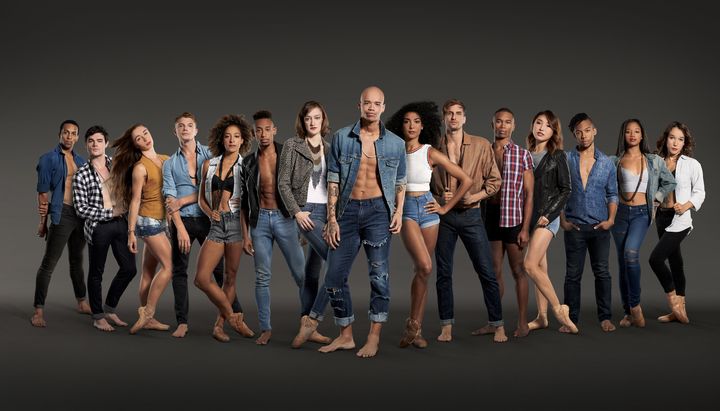
The Complexions Contemporary Ballet Company
“We’re pulling from common events of the day, and interactions with friends and loved ones,” says Richardson. “We’re trying to create a dialog for the audience to provoke thoughtful conversation. What the audience will see each night is some amazing dancing, but they’ll also see a context of humanity and where we are today, and it’s not always negative. We can be in the positive lane too, but surely we’ll need to touch upon what is current today. I feel that with all the music that we have invested in from new age to Handel to all these different pieces of music combined, we’ll take the audience on a beautiful journey. I think they’ll have an amazing time.”

David Bowie
The season also features the New York premiere of “Star Dust,” a tribute to iconic music legend David Bowie. Incidentally, Rhoden and Richardson were already working on a tribute to Bowie before he passed in January 2016. “Star Dust” had its premiere last year in Detroit. “David Bowie had spent a great deal of time in Detroit creating music, and so we thought it was very fitting to do it there,” says Richardson. “‘Star Dust’ is just an amalgam of his music. We wanted to talk about the various types of music that have been a part of our generation. He has been such a chameleon throughout the years and has inspired so many. He was not the norm, and now his music is so relevant. It was relevant then, but right now it’s more relevant. That’s one of the reasons we wanted to deliver this tribute so that the audiences can have a wonderful journey with the music but also see the genius of his music and who he was as a person.”
Unfortunately, Bowie never had the opportunity to see “Star Dust.” His family has been invited. “We’re hopeful that Iman and his daughter Alexandria Zahra Jones will be able to attend,” says Richardson. “We would love for them to experience it. I’m not sure if it will be a raw nerve for them.”

Alvin Ailey
Nearly 30 years ago, Richardson and Rhoden studied under the iconic Alvin Ailey of the Alvin Ailey American Dance Center. It was Ailey’s vision and foresight that planted the seed for their collaboration. “We didn’t think we were going to do a company,” says Richardson. “We were like, let’s do this project through the advice of Alvin. He said to us, ‘You all are choreographing all over the state right now, why don’t you put this all together and do an evening and show people?’ We were like, ‘Oh, okay.’ We sold out for three nights with 866 seats at Symphony Space. Alvin was an amazing person. He was a nurturer and saw talent and developed it.”
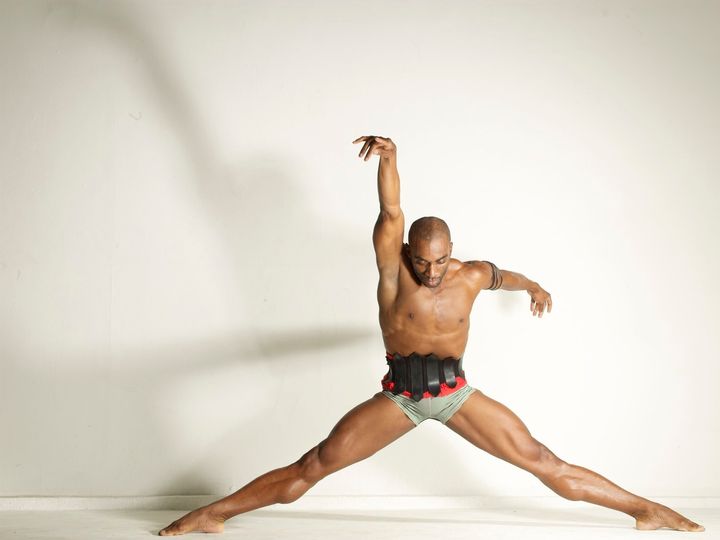
Desmond Richardson
Richardson made history as the first African American principal dancer of the American Ballet Theatre. He’s also well-known for his Tony Award-nominated role in the original cast of Broadway’s Fosse, among numerous other stage productions globally. He was hailed by The New York Times as being “among the great dancers of his time.” Ballet Magazine describes him as a “moving sculpture, a body that is art, passing through time and space with power and grace.”
Inspired To Dance
Born in Sumter, S.C., and raised in Washington, D.C., and later in Queens, N.Y., Richardson started dancing at 12 years old. “I have been dancing for a very long time,” says Richardson. “According to older standards 12 years old is a good age for guys to start dancing. Women start younger because parents often put them in ballet school at three and four years old. I will say that my trajectory was pretty fast.”
Richardson grew up in an artistic family. His late father, Larry James Richardson, was a sanitation worker who sang gospel music and doo-wop. His two brothers are visual artists and both attended the High School of Art and Design in New York City. “My father saw a lot of different parts of the artistic world and the real world because he had children to raise,” Richardson expresses. “I had the support of my mother and father and they always pushed us and always told us to follow our passion and to go for it, but you’ve got to do it at 110 percent because there are people that have set the bar and you can’t come along doing anything less.”
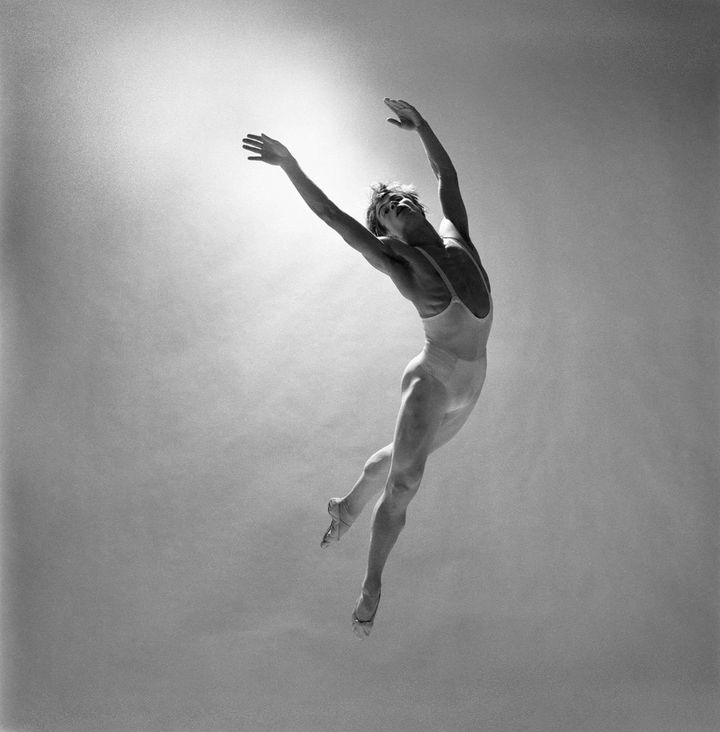
Legendary Russian dancer, Rudolf Nureyev
Richardson was caught by the dance bug while watching one of many dance programs on New York City’s WNEW-TV. “I saw the most amazing performance by Russian dancer Rudolf Nureyev and something clicked for me,” says Richardson. “I said, ‘Oh, my God I’ve got to dance, that’s what I’ve got to do.’”
Though inspired by Nureyev’s performance, he wasn’t sure how he was going to get started. One day at school, his guidance counselor, also a gymnastics coach and a follower of dance, recommended that he audition for the High School of Performing Arts. Two girls from his school had recently been accepted there.
Richardson followed suit and was also accepted to attend the original High School of Performing Arts on 46th Street in New York City’s Theater District, the school immortalized in the 1980 film Fame. The landmark building is now known as the Jacqueline Kennedy-Onassis High School for International Careers. In 1984, the High School of Performing Arts and the High School of Music and Arts merged into Fiorello H. LaGuardia High School of Music and Performing Arts in the Lincoln Center area.
Mentored By Alvin Ailey
Richardson’s professional career started right out of high school when he was accepted into the Alvin Ailey Second Company. Within that same year, he received another big career boost. He was selected to dance in Michael Jackson’s “Bad” music video. After a year in the second company, Richardson was promoted to Ailey’s main company, where he stayed for eight years before Ailey passed in December 1989. “From the first time Alvin saw me at 15 years old, he noticed me,” says Richardson. “He said to me: ‘Young man I want you to work hard. I have my eye on you,’ and I was flabbergasted that he even knew who I was, what my name was. I had auditioned for the company three times when I was in my teens, and he said ‘Not now, young man, not now,’ but he kept on me and said, ‘You know what? You’ve got something. It’s going to come to fruition. I need you to work on these particular points and parts in your artistry, and then we’ll see about working with you.’ He brought me into the company when I was turning 18 years old.”
During that developmental process, Ailey continued to encourage Richardson. He knew that he was young and young-looking for his age. All the other dancers in the company were between 30 and 40 years old. Ailey told Richardson that he needed him to do push-ups to appear more distinctive from the women in the company. “I adhered to his request,” he continues. “My professionalism was in place I was coming through the school, so there was no choice. He wanted me to work on esthetic things. What I wanted to look like, what am I saying with my dance? Am I just being technical? Am I coming from the heart and soul in humanity? What is happening because people need to be able to relate? Once he told me that, I was all about it because I wanted to learn, not only the technical aspects of dance but what is it that I had to offer from my soul and that’s one of the things that I recognized in watching him. I didn’t know anything about a fifth position or a sous-sous, or anything like that. I saw his soul.”
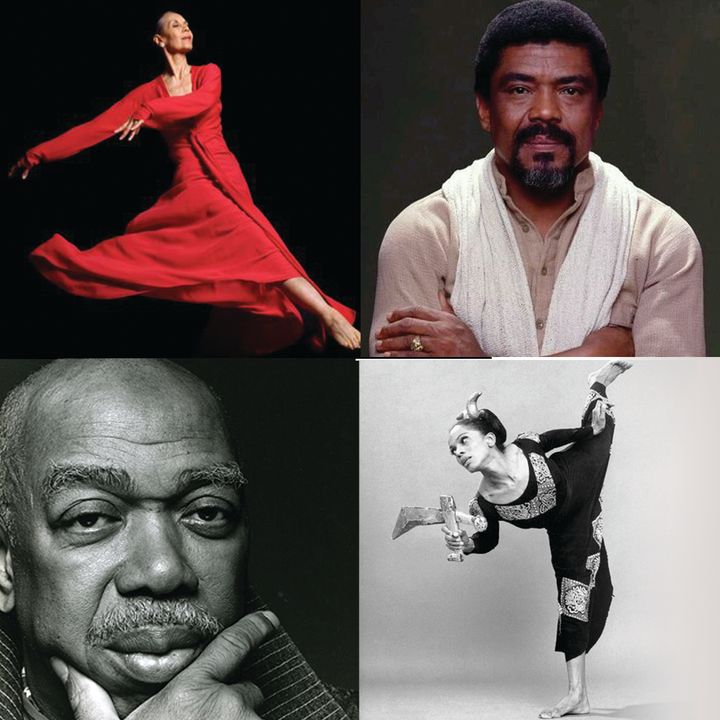
Dance Icons: (top row, l-r) Carmen DeLavallade, and Alvin Ailey; (bottom row, l-r) Geoffrey Holder and Mary Hinkson
Richardson reveres the icons that came before him including Ailey, Nureyev, Carmen DeLavallade, Geoffrey Holder, and Mary Hinkson, and continues to be inspired by their works and teachings. “These people are unique,” says Richardson. “There’s never going to be another person like them. They have shared with me the way to do that, and the way to do that is to be honest, to be open, and to be in the moment.”
Just as Richardson was nurtured, mentored, and guided by many, he now shoulders that same responsibility and imparts knowledge and pearls of wisdom to the young dancers of today. He recognizes that the hustle of young dancers today is much different from what he experienced in the ‘80s and ‘90s. However, he still expects the same work ethic, diligence, commitment and dedication that he demonstrated as a young dancer.
“Dancers back in the day wanted to learn from everybody,” says Richardson. “Today a lot of the younger dancers are in question. Maybe, it has a lot to do with technology. There’s a lot of bombardment, and the attention wanes a lot because they’re so ingrained on the phone. They’re looking at the phone and looking for the next thing. When I started, I had to go to the library and do research. There was no Google. There was no Internet. I had to go to the library and look at a book or look at a sculpture to see lines of people and study. The work ethic has waned too. For some young people, not all, I would say the work ethic needs to be more on point for sure. I think a lot of dancers work hard, but then they don’t work hard. I would love to see this work ethic on a consistent and persistent basis. One of the things that I recognize is the loyalty factor for young dancers, they want to move so quickly, and sometimes you need to stay put to learn and to grow. I stayed at Alvin Ailey because he said, ‘Listen, you’re not ready to go anywhere.’”
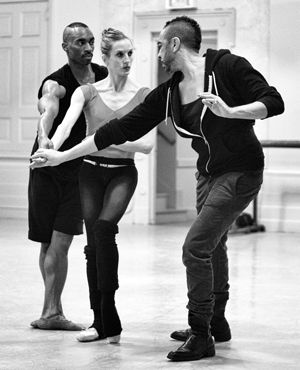
Desmond Richardson and Dwight Rhoden with Complexions’ dancer Wendy Whelan
Mentoring Others
Richardson is profoundly passionate about the careers of young dancers. He advises them to follow their passion. He stresses that the voice is important and valid and that dancers must come with their uniqueness; if they haven’t found their uniqueness, they need to be in search of it. He believes it’s important that young dancers not be a homogenization of other people, or try to emulate someone else. He feels fortunate and blessed to have been privy to dance and learn from people who are unique.
It’s that same philosophy that Richardson and Rhoden teach at Complexions. There are 14 dancers who travel with the company domestically and abroad. The dancers work 10 to 11 months out of the year. Throughout the year, the company offers a variety of pre-professional programs from educational workshops to master classes.
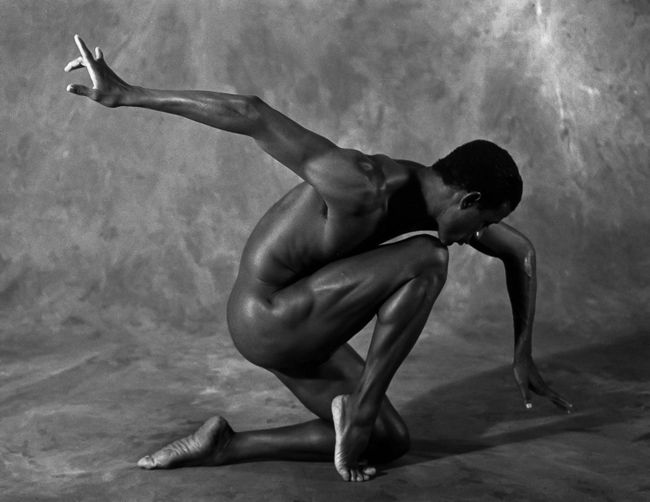
Mel Tomlinson
“Dwight and I pride ourselves on teaching and teaching the style of contemporary ballet that we have coined for Complexions,” he explains. “At Complexions Contemporary Ballet all the girls work en pointe with pointe shoes, but they’re able to kick those off and get on the floor and do floor work or put on a sneaker and get into some hip-hop if they need to, or heels. It’s an amalgam of many different dance genres, but the style is very indicative of classicism and classical ballet where you have to have form but not be so held by the form that you cannot explore other genres of dance. That’s one of the reasons we wanted to create Complexions Academy, because we’ve noticed that a lot of the students want to train in this style, but they can also use everything else that they’ve learned. We like to see young people explore their artistry within all that they know. Bring it all to us, and we’ll help shape it.”
Other Inspirations
Many people have influenced and shaped Richardson’s career as a legendary dancer. During his early years, the one person who was instrumental in developing his confidence and kept him focused was his teacher, Penny Frank. “I call her my Jewish dance mom,” he said. “She was no-nonsense when I was over there beating myself up about, ‘Oh, this doesn’t look right. This doesn’t look right.’ She was like, ‘Okay wait, all of that you’re doing needs to stop. Put that somewhere and let’s get to it. Get on the floor and get to it because you’ve got to do the work instead of beating yourself up looking in the mirror and trying to judge yourself.’ She’s always been that person. She continues to come to my performances and she either likes it, or she’s like, ‘Okay, that was nice. Yeah.’ She’s not a yes woman. I love that and appreciate her so much. Then there was Walter Raines; he’s no longer with us. He was my classical ballet teacher. Then there were people like Robert Christopher and Denise Jefferson. These are the mentors I grew up with who helped to shape who I am today.”
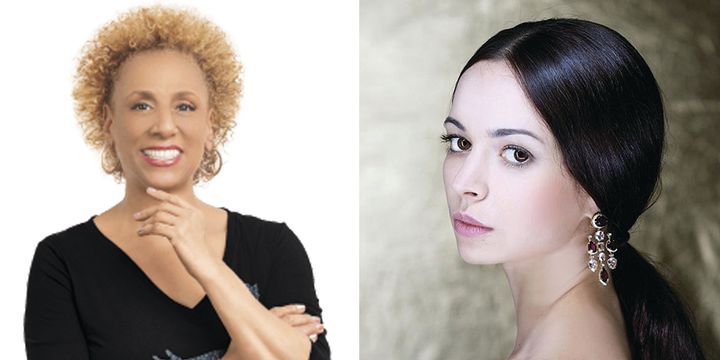
L-R: Sarita Allen and Diana Vishneva
Richardson’s inspiration came from several people and places. He was most inspired by a diverse group of dancers. In addition to Nureyev and Ailey, Mel Tomlinson was also one of his favorite dancers. Most people are not familiar with Tomlinson, an African American, 6-foot-4-inch principal dancer with the New York City Ballet. He also loved Sarita Allen, one of his favorite dancers in the world, as well as Diana Vishneva, principal dancer with the Mariinsky Theatre and the American Ballet Theatre.
There were many choreographers who also made a significant impact on Richardson’s progress. Of course, his business partner, Rhoden heads the list, along with Ailey, William Forsythe, Alonzo King, Maurice Bedjart, John Butler and Elisa Monte. He is also a huge supporter of numerous dance companies including Studio Wayne McGregor in England, Alonzo King’s LINES Ballet in San Francisco, and the Alvin Ailey American Dance Center in New York City.
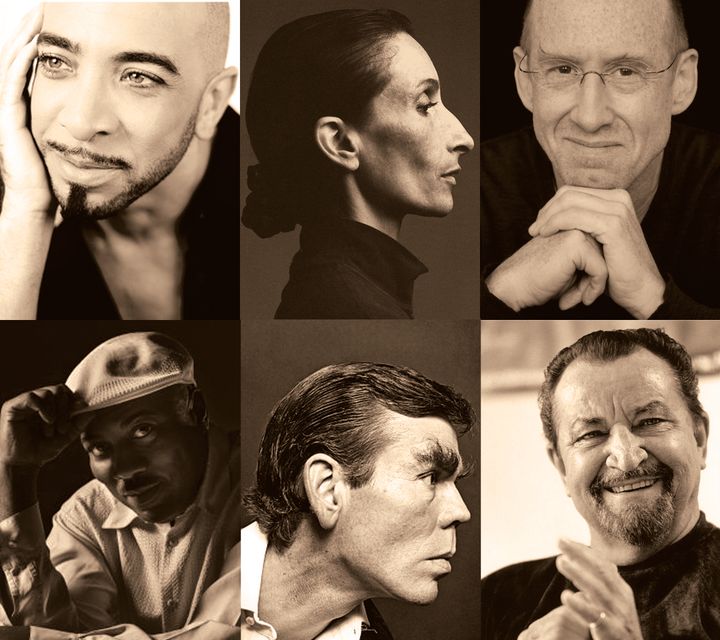
Top Row: (l-r) Dwight Rhoden, Elisa Monte, and William Forsythe; bottom row: (l-r) Alonzo King, John Butler, and Maurice Bedjart
Richardson has performed on hundreds of stages all over the world, but his favorite stage is the Parthenon in Greece. He said the opportunity and experience to perform in an ancient place was incredible. His favorite travel destination is Italy.

The Parthenon in Greece
Blazing A Trail
With the worldwide success of Complexions Contemporary Ballet, both Richardson and Rhoden have been fortunate to brand themselves in other areas of entertainment. Richardson has many memorable highlights throughout his stellar career. He was invited by Debbie Allen as one of the five dancers to perform on the Oscars. He also made a second appearance on the Academy Awards. He danced at The Metropolitan Opera with the American Ballet Theatre, where he became the first-ever African American principal dancer; and where today we have witnessed Misty Copeland’s rise as the first African American woman principal dancer with the company. He worked with Michael Jackson on numerous occasions, including a performance of “Bad” on the American Music Awards as well as work on the History tour.
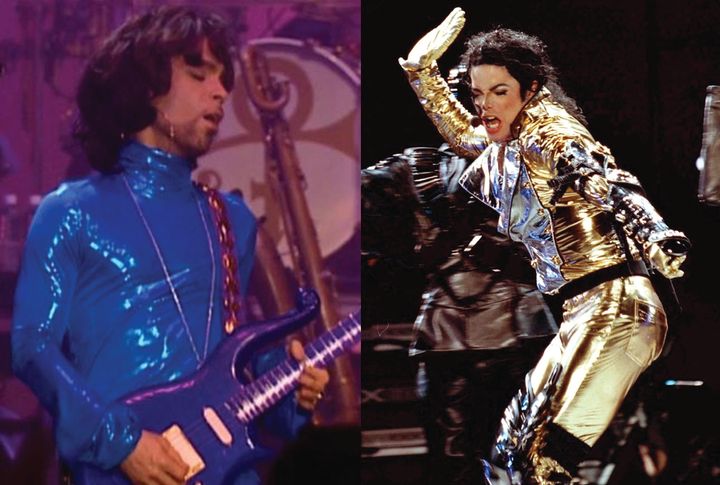
Prince (l) on the Rave Un2 the Year 2000 tour and Michael Jackson (r) on the History tour
Together, he and Rhoden worked and choreographed Prince’s Rave Un2 the Year 2000 tour and worked with him on other projects with Lenny Kravitz, Morris Day and others. He also worked with Prince and his former wife, Mayte Garcia, and the New Power Generation Dance project. He also worked on FOX-TV’s national dance competition show, “So You Think You Can Dance.”
The Complexions Legacy
Richardson and Rhoden travel with the company a majority of the time. In addition to the company’s 14 principal dancers, the company employs a ballet master, a lighting designer, and a stage manager. Before the company goes on tour, Richardson and Rhoden rehearse with them to make sure the dancers are right and on point. When they are not on the road with the company, they are constantly in touch with key personnel. “Everything stems from the top,” says Richardson “There’s no coasting, there’s none of that. People get tired, but I don’t care. I’m not interested in tiredness because the audience is not interested in how tired you are. The audience just paid $100 and they want to see it, they want to see it for real. That's what we say to our dancers. Every performance is new, even if you have three within a week or six within a week.”
Throughout the years, Richardson has traveled the world many times over. Complexions has been presented to more than 20 countries on five continents. “Whether we’re in Poland, whether we’re in Italy or Paris, we get the same reaction everywhere we go,” he continues. “There’s something very palpable that comes across the stage that is uniquely Complexions. It is expressive, it’s super passionate, and when you leave the theater, you’ve had an experience. It’s important that the people are moved. I’m just a fan of that, I like moving spirits, and that’s something I learned from Alvin Ailey. He taught myself and Dwight how to do it. We want you to have an experience, and that experience is going to be everything that you want from that evening that you’ve come to experience.
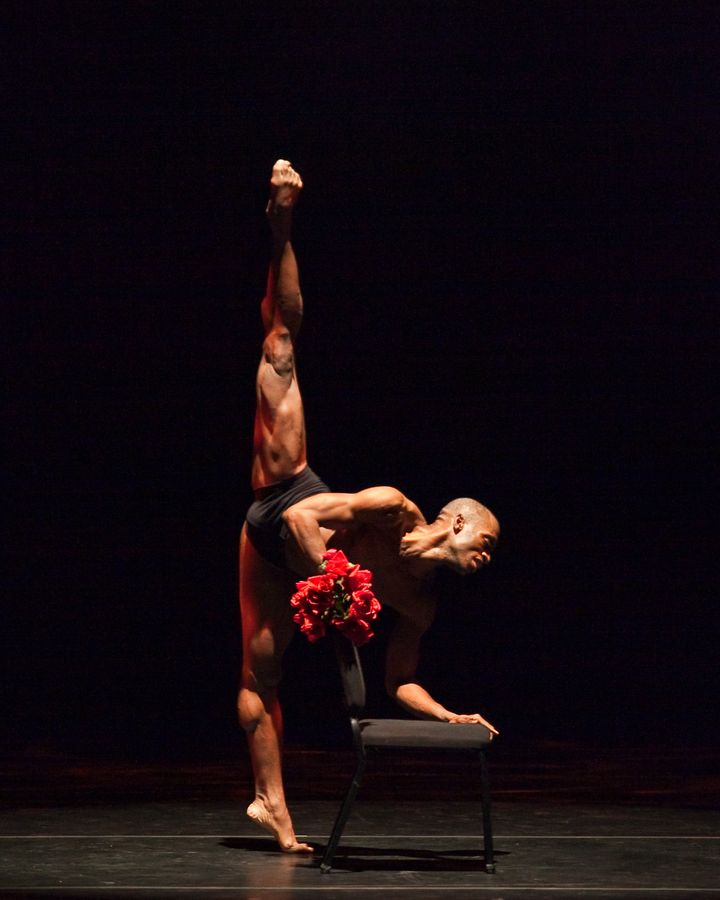
Desmond Richardson
People don’t see many people of color dancing on the stage, so I guess I’ve been the only one in many years that has graced these stages. I know that I have a responsibility, not only to myself but to the people who have come before me to share with people that know nothing about the culture. Not only African American culture but dance in general, American dance. To me, that’s everything, and I love doing it and continue to do it.”
Throughout the company’s history, Complexions has performed at nearly every major performing arts venue around the world. In April, Complexions will make its debut at the Kennedy Center in Washington, D.C. “It’s phenomenal that after 23 years in the business, that we’re just now getting there,” says Richardson. “But all things have a season. We are just blessed to be able to have this opportunity.”
With all the global fame, all the awards and honors, all the accolades, and all opportunities presented throughout his illustrious career, Richardson is grateful for his success and happy that he was chosen to be a part of this journey. “I want to continue performing as long as I can, he says. “That’s why I have been circumventing that with a lot of teaching and paying it forward, and giving it back. I love to teach. I love it because somebody taught me well, and taught me the basics, and allowed me to investigate who I was within the movement. That’s what I’d love to pull out of young dancers. It’s something that I love, and I’m glad that I still get an opportunity to perform all over the world,” he says. “I’m blessed to be able to still work and work at a high level and work on different projects on stage and television. I feel quite blessed.”
Complexions Contemporary Ballet runs through Sunday, February 5, at the Joyce Theater, located at 175 Eighth Avenue, New York, N.Y. For information on tickets, please contact The Joyce website, Joyce Ticketing. Tickets can also be purchased by phone at 212-242-0800.
Gwendolyn Quinn is an award-winning media consultant with a career spanning over 25 years. She is a contributor to BlackEnterprise.com and BE Pulse (via Medium.com), Huffington Post and EURWEB.com. Quinn is also a contributor to Souls Revealed and Handle Your Entertainment Business.
